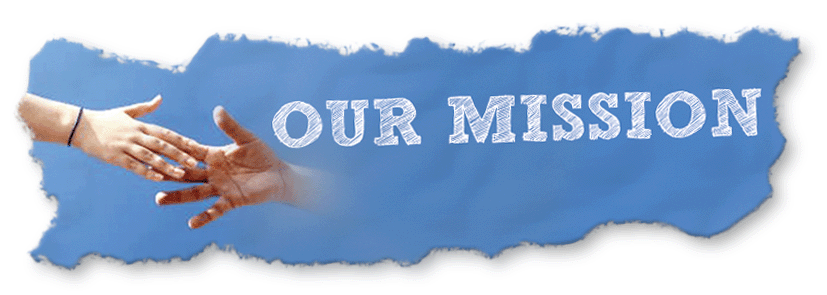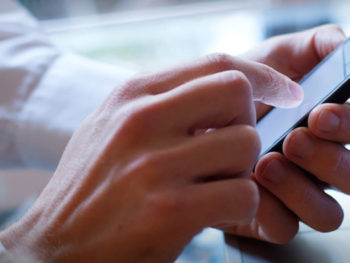The Five Senses
God has wonderfully endowed humankind with five senses. It is through these five senses that man makes contact with his fellowman and his surroundings. The five senses are:
Hearing
Sight
Touch
Smelling
Taste
Man hears with his ears, strategically placed on either side of his face. His eyes through which he sees is placed close to his forehead. The ability to touch and feel is within the two hands and that being the right and left hand. The nose has two nostrils that enable man to smell. The mouth with its jaw, teeth and tongue gives man the ability to chew food and make the necessary distinctions of taste between the various foods he eats.
These senses are vital to the well-being of man and when these senses fail or cease to operate man is considered as handicapped and impaired.
The Precise Position of the Five Senses
Four of the Five Senses are situated on the face, close to the brain, and that being; hearing, sight, smell and taste. The touch sense is approximately 80 -100 centimetres from the eyes. It is all by itself and yet they all work perfectly in harmony. They are uniquely correlated by the brain, which transmits directives as the other four senses feed information to the brain. It is the touch sense that acts as the servant of the other four senses. Perhaps considering the following acronym will help us to see the correlation between the hands and the brain.
H – Hands
A – Activate
N – Neurological
D – Directives
The Hand – the Touch and Feeling Sense
There is a marked distinction between touching and feeling. When touching we encounter an object and oft times we are unable to distinguish immediately what has been touched, however when we feel we able to detect what has been touched. It is usually with the fingers of the hand that we are able to recognise what has been touched.
The hand has five fingers and each with a special ability. It is because of these special abilities that the fingers are named accordingly:
The Thumb
The Index Finger
The Middle Finger
The Ring Finger
The Baby Finger
The Thumb
The Thumbs are situated on the extreme left of the right hand and the extreme right of the left hand. When our hands are folded together, the two thumbs meet. It is the smallest of all the fingers and yet surprisingly enough it often speaks of the seal of a person. Those unfortunate people who cannot write are encouraged to use their thumbprint as a mark of authentication. Strange and yet so true every person has a different thumbprint, (in fact all the fingers) and therefore it has the uniqueness of authorising legal documents. Because of this uniqueness, the thumb is often referred as The Authority of a Person or the Seal of a Person.
The Index Finger
The Index Finger is the closest to the thumb of authority. The Index Finger is used for pointing and therefore is often referred to as the pointing finger – the finger of direction. The proximity of the pointing finger to the thumb of authority is for a special reason. When authority and direction join, they take on an ability that is similar to that of the tongue. The tongue through speech communicates. The thumb of authority and the finger of direction also communicate. When a pen or a pencil is placed between the two communication also takes place. The tongue speaks to the ears of men with audible sound, whereas the thumb of authority and the finger of direction speak to the eyes and that not with sound. Like the thumb, the index fingers join when the right and left hands are folded together.
One of the common uses of the index finger is the calling of people; however, in certain cultures this is very offensive.
The Middle Finger
The Middle Finger is the longest of all the fingers and when the hand is touching, it reaches out the furthest on the object being touched. Like the thumb and the index finger when the hands are joined together, the middle fingers touch and unite.
Sadly, in many cultures the middle finger is used as a sign of obscenity and insult. All the other fingers are closed down onto the palm of the hand whilst the middle finger is stretched out thus signifying obscenity and insult.
The Ring Finger
The Ring Finger is the second longest finger. It is called the Ring Finger for on it in most cultures the wedding ring is worn. The wedding ring is usually worn on the left hand. I once heard it is the finger that has a vein linked directly to the heart.
After research, I have discovered that this was not the case. There was a belief in ancient times that a vein ran from the fourth finger (that is counting from the thumb) directly to the heart. No wonder this vein was nicknamed “vena amoral” which means “the vein of love.” It was this view in mind that married couples wore their wedding rings on the ring finger depicting their love for each other as a hand and heart connection.
When the two hands are clasped together, the second two longest fingers come together as a unit.
The Little Finger
The Little Finger is also known as the pinkie finger, which means small. Counting from the thumb it is the last finger of the hand. This little finger is usually used to scratch in the ear. Like all the other fingers when the hands join, they denote union.
The Symbolism of the Hand
There is so much that we can glean from the symbolism of the hand, that we can adopt in order to improve our personal life and how we treat others with honour and respect. Before we mention and briefly explain these wonderful symbols of the hand, it is essential that we remind ourselves that there is a constant correlation between the brain and the hand. The hand receives directives from the brain and acts accordingly.
6
There are two kinds of actions that the hands express and that being voluntary and involuntary actions. Voluntary actions are undertaken by one’s free will. Classic examples of this are what we decide to eat, whether or not we do daily exercises to strengthen our bodies. Involuntary actions are those certain actions over which we have no control. Several good examples are sleeping, breathing and yawning (I find it quite strange that when I see someone yawning, I start yawning almost immediately). The best example of involuntary actions comes from my Primary school days. Our teacher gave us a classic example of how when touching a hot plate or hot pot we do not decide whether to remove our hand. Without premeditation and thought, we remove our hands instantly.
Symbol 1 POWER
As small, as the hand is in comparison to the rest of the body (the chest, the legs, the head etc) it is rather remarkable how that POWER is associated with the hand. Considering a clenched hand, we note it enables a person to knock down another person. On the other hand, when the hand is open and outstretched to another hand it has the ability to pick a person up.
From this simple thought The Lord has spoken to me and I have shared this with many of God’s wonderful children: “POWER IN THE WRONG HANDS CAN BE VERY DESTRUCTIVE; HOWEVER POWER IN THE RIGHT HANDS CAN BE VERY CONSTRUCTIVE.
Usually an open hand is a hand that blesses others. Usually a clenched hand (a fist) is a hand that destroys others.
There are those certain few (people like Hitler, Mussolini and Bonaparte) who believe that hands are meant for war. It is not surprising to note that almost all weapons of destruction are placed in the hand – the sword, the bow and arrow, the pistol, the machine gun, the knife etc.
Remarkably, as much as there are violent people in this world, there are those gentle people as well, whose life’s are motivated to do good. These people’s hands are forever open and outstretched to the less fortunate and downtrodden, willing to pick them up from the muck and mire of an unpleasant life and clasping their weak and feeble hand of the discarded in their strong hand and leading them to a better life.
There are so many good types of hands in the world:
Hands of Mercy
Hands of Grace
Hands of Trust
Hands of Peace
Hands of Power
Sadly, in this world there are also those hands that love to fight – the hands of war.
Symbol 2 Covenant/Agreement
My parents although they could not provide the best and sundry for us, yet gave my siblings and myself that which money could never ever buy. They gave us honour and dignity. My father was a man of a few words and yet a man of great action. He lived by his word and his word was his bond. He was as good as his word and whenever he gave his word to another person as his bond, he joyously yet solemnly said: “Let’s shake on that.” My humble father extended his hand in a handshake, thus signifying the confirmation of his promised word.
How sad are the present days, the words of men cannot be trusted. Every agreement must be in writing, signed by the parties entering into covenant agreement, further witnessed by at least two witnesses and signed on the document of agreement. Times have sure changed humankind. It was not so long ago that the only requirement was a simple handshake.
Symbol 3 Greeting
My dear Pastor, Apostle Edwin Gray, surely knew how to break down the divide between people. He convinced me and many others of the power of the wave of the hand accompanied by a pleasing smile. I have seen the most miserable and unloved people succumb to a hand wave of greeting and a pleasing smile.
Gestures carry definite messages and no doubt, a hand wave greeting gesture sure invites people to want to know you. They probably ask themselves why this man is so friendly.
One of the first things that mothers love teaching their little babies is the farewell wave. With great joy and pride, we hear them encourage the little baby: “Say bye bye.” To our wonderful surprise the sweet and adorable little baby eagerly begins waving their hands and smile gleefully. No doubt, the little child did not say goodbye, but they convincingly spoke with their hands.
In several cultures hugging and kissing is discouraged and at best, left to the women. To refrain from definite embarrassment men prefer to firmly shake hands. It is most assuredly a sign of friendship as well. Handshakes in most cultures are signs of welcoming and fare welling.
Symbol 4 Anger
An angry person is a dangerous person. They can do great harm to people. They are best avoided. Often angry people unknowingly give a gesture that forewarns us of evil intent. They raise a clenched hand (a fist) toward people.
It has been said that many angry people lose their rationality. It is as another person takes over.
Symbol 5 Respect
The enlisted troops salute their superiors (officers) of an army. No matter where they meet, the enlisted soldier will salute his senior. This is not just a sign of greeting; it is more a sign of respect acknowledging seniority. The hand raised to the side of the head as the soldier brings his feet together with a ceremonious stomp.
Symbol 6 Prayer
The hand portrays two symbols of prayer and that being trust and contrition. When our hands are placed together and all or fingers face upward it is a sign that we are more than just communicating with God in prayer, we are trusting and believing God will answer our prayer.
When our two hands are clasped together, all our fingers face downward except our two thumbs, which face upward, this is very significant. The eight fingers downward is a sign of contrition. We acknowledge our sins, holding our clenched hands on our chest close to our heart as a sign of contrition and repentance. The two thumbs point upward (heavenward) and note carefully though they point heavenward they are crisscrossed. This speaks of the Cross, where our sins were dealt a deathblow, or, should it should remind one of The Cross.
When our hands are open and raised above our stature it is in most cases a different type of prayer altogether. This symbolism of prayer does not deal with trust and contrition; it deals matters that concern others. It is prayer of fervent intercession. It is a time that we take on the burdens of others and plead with Almighty God on their behalf.
Symbol 7 Approval and Disapproval
Though most people are blessed with the ability to speak, we often use gestures to communicate and often used metaphorically. One of the most common metaphorical gestures is the thumbs up or thumbs down. The index, middle, ring and small finger are closed in a tight fist action with the thumb extended either upwards or downward. The upward extended thumb conveys the unspoken metaphor of approval, whereas the down-extended thumb denotes disapproval. Often when asked probing questions like “how was the game?” Thumbs up sign will indicate the game was good. The thumbs down sign would indicate the game was bad.
The Versatility of the Hand
The hand is the most versatile member with the unique ability to act on behalf of the impaired senses. It has the unique ability to act on behalf of the impaired senses. The unique hand aids those people who are unable to hear. The creative hand aids those who are unable to speak. The illustrious hand aids those unable to read.
The hand manipulates sign language and those who are deaf are able to hear and communicate as they focus on the manipulations of the hand. Those who are unable to speak are able to communicate and that effectively as they too use the art of sign language.
The hand is extremely sensitive. The sense of touch and feeling in all of the fingers give the hand the ability to read. The blind and the visually impaired are able to read through the touch and feel gate of their hands. Braille (named after the Frenchman that invented Braille) is written on embossed paper, which enables the letters of the alphabet to stand out from the paper. Each letter has its distinct code and touch thus enabling the blind to read.
Blindness not only robs people of sight and the ability to read, it also robs the blind of mobility. Once again, it is the hand of power that comes to the rescue of the blind who are often prisoners in their own homes. By simply placing a marked cane, usually white, in their hand, they are able to go to most places where all normal people go. There is also the remarkable aid of the trained dog who leads the blind. Once again, the hand plays a prominent part. The lead is placed over the neck of the dog and extends to the hand of the blind person. The dog avoids all the dangerous hazards in the path of the intended journey.
It might sound laughable that the lead is not placed around the ankle, the leg, or the neck of the blind. The lead is strategically placed in the hand of the blind. It is the hand of the blind that has the strength and the ability to heed (pay attention to, listen to, take note of, observe, notice and regard) the guidance of the dog. Can we imagine the lead around the ankle, the leg or the neck? The blind person will must definitely be hobbling along or being slowly choked to death. It is the all-powerful hand or should I further say the remarkable hand that becomes the hearing aid, the mouthpiece and the spectacles of the physically impaired.
181 total views, 1 views today



